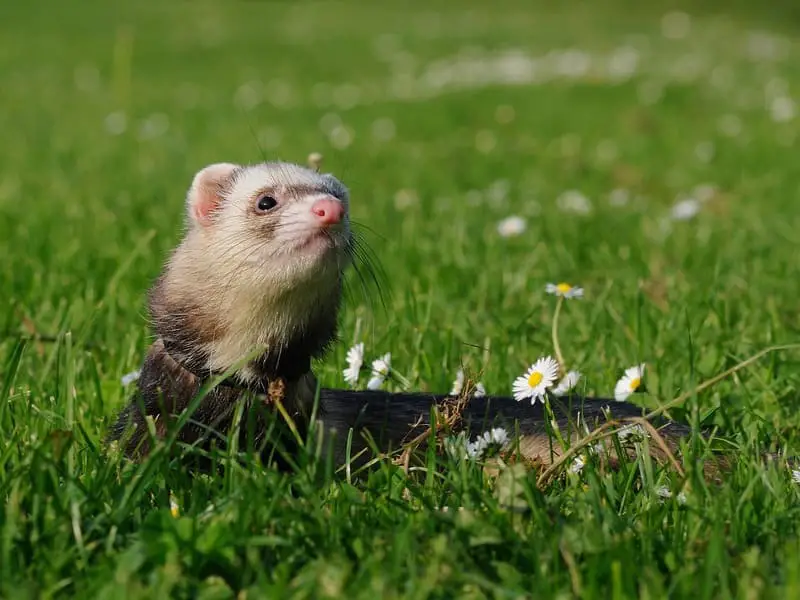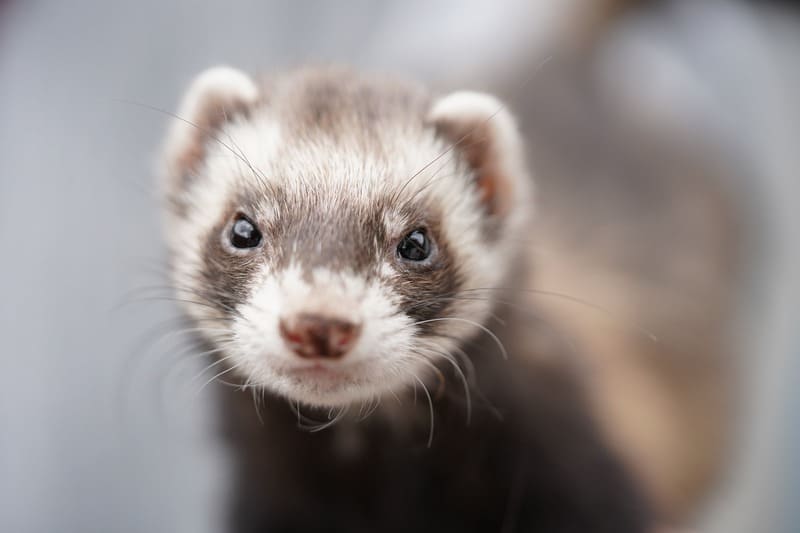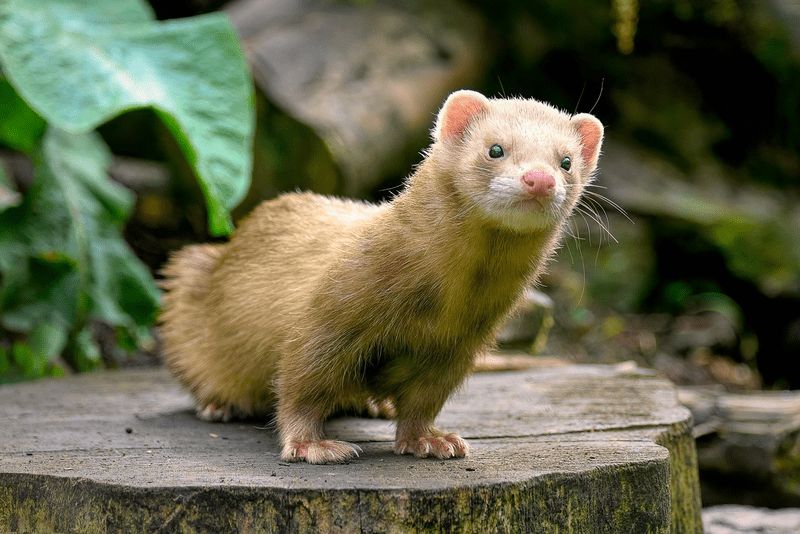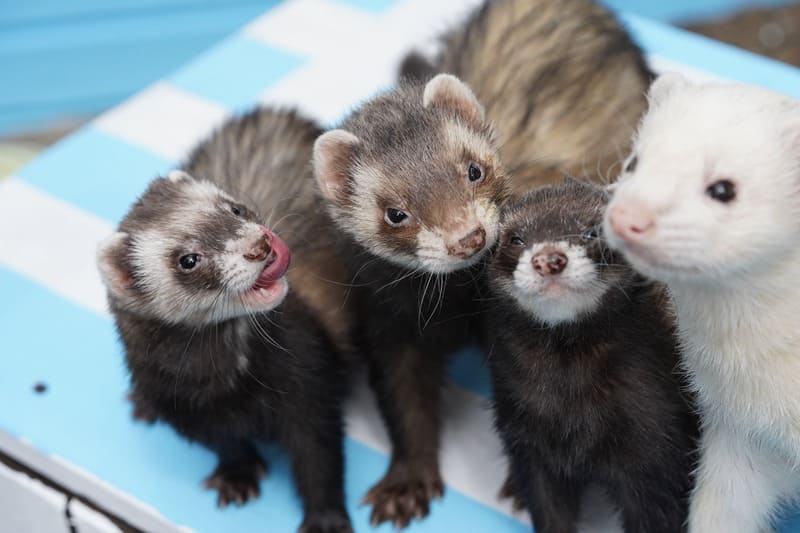Ferrets are unique and captivating pets, known for their playful and curious nature. To ensure the well-being and happiness of your ferret, it’s essential to provide them with an ideal habitat. In this comprehensive guide, we will explore the elements that make up the perfect living space for ferrets, including cage or enclosure selection, bedding, environmental enrichment, and safety considerations.

Selecting the Right Enclosure
Choosing the right enclosure is the first and most critical step in creating an ideal habitat for your ferrets. The enclosure serves as their primary living space, so it needs to be spacious, secure, and comfortable. Here are some factors to consider:
Size
Ferrets are highly active animals that require ample space to move, play, and explore. A single ferret should have a cage with a minimum size of 18 inches by 24 inches by 18 inches, but larger is always better. If you have more than one ferret, you’ll need a larger enclosure to accommodate their needs.
Multi-Level
Ferrets love to climb and explore, so a multi-level enclosure with ramps and shelves is an excellent choice. These structures provide mental stimulation and exercise, making your ferrets happier and healthier.
Bar Spacing
Ensure that the bars of the enclosure are close enough together to prevent your ferrets from escaping or getting stuck. A bar spacing of 1 inch or less is recommended.
Ferret-Specific Cages
There are cages designed specifically for ferrets, with features like wide doors, removable pans for easy cleaning, and hammock attachments. Investing in a ferret-specific cage can make life more comfortable for both you and your pets.
Solid Flooring
While some cages have wire flooring, it’s more comfortable for ferrets to have solid flooring. If your cage has wire flooring, provide resting spots with solid surfaces, such as hammocks or shelves.
Easy Cleaning
Choose an enclosure that is easy to clean. Ferrets are generally tidy animals, but regular cleaning is essential to maintain a healthy environment. Look for cages with removable trays and shelves that can be wiped down or replaced easily.

Bedding and Litter
Selecting the right bedding and litter for your ferret’s enclosure is crucial for their comfort and hygiene. Here are some bedding and litter considerations:
Bedding
- Ferret-Safe Bedding: Choose bedding materials that are safe for ferrets. Avoid cedar or pine shavings, as they can release harmful fumes. Paper-based bedding or fleece liners are excellent choices.
- Soft and Absorbent: Ferrets love soft bedding, so provide them with materials like fleece, blankets, or hammocks to curl up in.
- Regular Washing: Whatever bedding you choose, make sure it’s washable. You’ll need to clean and replace bedding regularly to maintain a fresh and odor-free environment.
Litter
- Litter Box: Provide a litter box with ferret-safe litter. Place the box in a corner where your ferret naturally prefers to eliminate.
- Pelleted Litter: Pelleted paper or wood litters are suitable for ferrets. Avoid clumping litters, as they can be harmful if ingested.
- Odor Control: Choose a litter that provides good odor control. Ferrets are known to have a distinctive scent, and proper litter can help manage it.
- Regular Cleaning: Maintain a daily cleaning routine for the litter box. Ferrets are more likely to use it when it’s clean.
Environmental Enrichment
Ferrets are intelligent and active animals that require mental and physical stimulation. Environmental enrichment is vital for keeping your ferrets happy and preventing boredom. Here are some ways to provide enrichment in their habitat:
Toys
Ferrets love toys, and having a variety of them can keep your pets entertained. Consider toys like tunnels, balls, stuffed animals, and puzzle toys that dispense treats. Rotating toys regularly can prevent boredom.
Playtime
Ferrets need daily playtime outside of their enclosure. Set up a safe and ferret-proofed play area where they can explore and interact with you. Always supervise playtime to ensure their safety.
Hide and Seek
Ferrets enjoy hiding and seeking games. Create hiding spots within their enclosure or play area using tunnels or boxes. Hide treats for them to discover.
Digging
Ferrets have a natural digging instinct. Provide them with a designated digging box filled with safe materials like rice or dried beans. This can satisfy their instinct and prevent them from digging in unwanted places.
Climbing
Ferrets love to climb and explore. Install shelves, ramps, and hammocks in their enclosure to encourage physical activity and exploration.
Social Interaction
Ferrets are social animals and benefit from interaction with their human family. Spend time playing and bonding with them daily.
Outdoor Exploration
If you have a safe and secure outdoor space, consider taking your ferrets outside for supervised outdoor adventures. Use a ferret harness and leash for their safety.
Rotating Activities
Keep ferret life exciting by rotating activities and toys. Introducing new experiences and changing their environment can keep them engaged and happy.

Temperature and Lighting
Ferrets are sensitive to temperature and lighting conditions. Maintaining the right environment is essential for their well-being.
Temperature
Ferrets thrive in a temperature range of 60-80°F (15-27°C). Avoid extreme temperatures, as they can be harmful to your pets. Make sure their enclosure is in a climate-controlled area and provide bedding or hammocks for warmth.
Lighting
Ferrets are crepuscular animals, meaning they are most active during dawn and dusk. While they don’t require UVB lighting like some reptiles, they benefit from natural light exposure. Ensure that they have access to natural daylight during their active periods.
Safety Considerations
Creating an ideal habitat for ferrets also involves addressing safety concerns. Ferrets are naturally curious and can get into trouble if their environment is not secured.
Ferret-Proofing
Ferret-proofing your home is essential, especially during playtime outside their enclosure. Block off any small openings or gaps that your ferrets could squeeze through. Keep dangerous items, chemicals, and choking hazards out of reach.
Supervision
Always supervise your ferrets during playtime and exploration. Ferrets can quickly find their way into tight spaces or chew on items they shouldn’t. Being present to intervene can prevent accidents.
Ferret-Proofed Enclosure
Ensure that the enclosure itself is ferret-proofed. Check for any gaps or openings where your ferrets might escape. Secure any loose wires or cables that they could chew on.
Health and Hygiene
Maintaining a clean environment and providing proper bedding and litter are essential for your ferret’s health. Regular veterinary care is also crucial to monitor their well-being and address any health issues promptly.

Social Interaction
Ferrets are highly social animals and thrive on human interaction. While they enjoy playing with their ferret companions, they also need time with their human family members. Daily interaction, handling, and playtime can strengthen the bond between you and your ferrets.
Multiple Ferrets
If you have multiple ferrets, consider their social dynamics. Ferrets are pack animals and often do well in pairs or small groups. However, you should be prepared to provide individual attention and separate enclosures if conflicts arise.
Conclusion
Creating the ideal habitat for your ferrets is essential for their happiness and well-being. The right enclosure, appropriate bedding and litter, environmental enrichment, and safety measures are all critical components of a healthy and enjoyable living space for your pets.
Ferrets are unique, playful, and affectionate animals that can become cherished members of your family. By providing them with a well-designed habitat and plenty of love and attention, you can ensure that your ferrets lead happy and fulfilling lives in your care.
